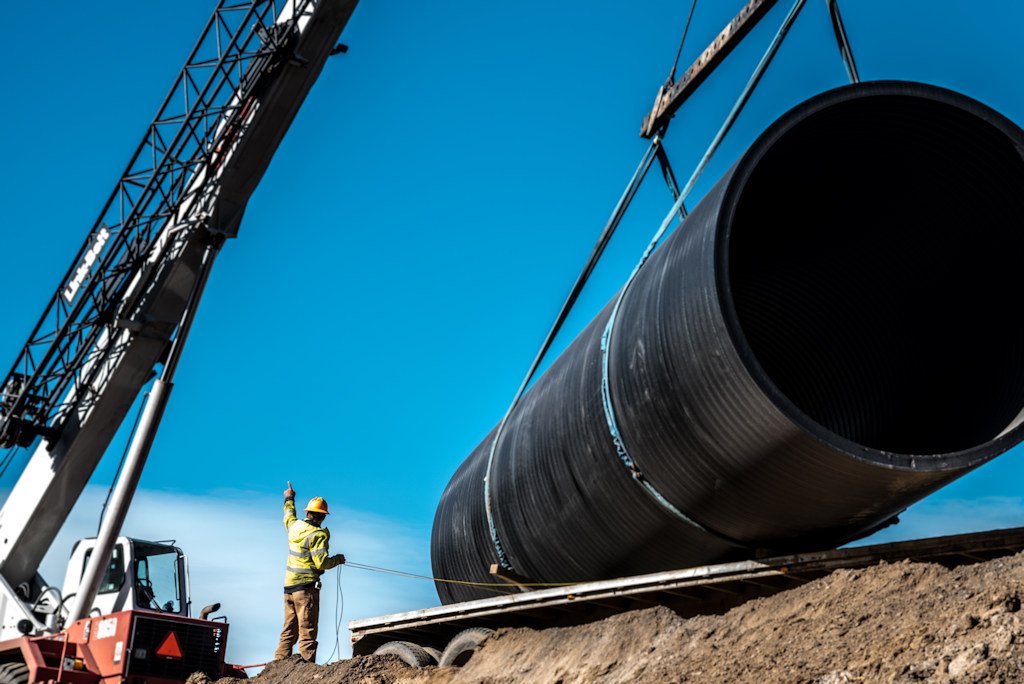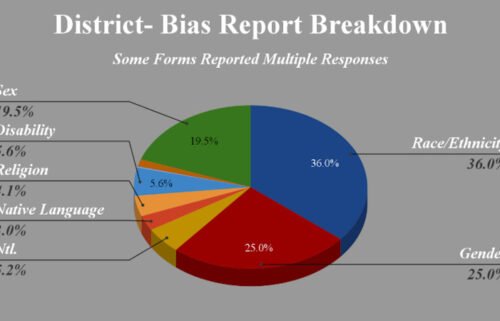US Bureau of Reclamation directs $2.6 million to pipe over 6 miles of C. Oregon irrigation canals

(Update: More details from DRC executive director)
Deschutes River Conservancy, three irrigation districts partner for work
BEND, Ore. (KTVZ) – The federal Bureau of Reclamation has announced it will provide about half the funding for a $5.38 million project by the Deschutes River Conservancy and three Central Oregon irrigation districts to pipe over six miles of canals and improve monitoring and measurement.
The nearly $2.7 million in funding for the canal piping work is one of three projects in Oregon and 84 overall announced Friday by the Interior Department, a total $140 million investment in water conservation and efficiency projects across 15 Western states.
"The Deschutes River Conservancy, in partnership with the Central Oregon Irrigation District, the North Unit Irrigation District, and the Arnold Irrigation District, will convert over six miles of earthen canal to high-density polyethylene and polyvinyl chloride pipe, which includes 12,541 feet of the G Lateral, 15,368 feet of the G-2 sub-lateral, and 3,830 feet of the Lundy Ditch," the project summary stated.
“The project also includes installation of supervisory control and data acquisition systems at 10 locations along the Pilot Butte Canal,” it said. "The project is expected to result in annual water savings of 1,548 acre-feet, which is currently lost to seepage, and will result in reduced diversions."
"Conserved water can either be stored in the Wickiup Reservoir in the winter for release during critical times for endangered species, including the Oregon spotted frog, or can be left instream in the Deschutes River in the summer to provide increased flows and cooler temperatures for sensitive fish species," the agency added.
DRC Executive Director Kate Fitzpatrick said Monday the rest of the funding will be sought from two state grant programs, or possibly from a federal, bipartisan drought and water security package of legislation that's been proposed in Congress.
Fitzpatrick said piping lateral canals is imperative for connecting COID patrons to the piped main canal system and maximizing the project's benefits.
Fitzpatrick noted the funding is for piping of COID lateral canals and a private lateral in the Arnold Irrigation District, not the main canal work. Much of the piping is slated for the 2024-25 construction season, but the new measurement stations could start coming online sooner.
Water saved from the projects will be passed on to North Unit in exchange for an equal volume of protected instream flow in the Upper Deschutes below Wickiup Reservoir in the winter, Fitzpatrick said.
A year ago, COID completed Phase 1 of the Pilot Butte Canal piping, in the Redmond-Terrebonne area, conserving an initial 30 cubic feet per second. Piping the entire 25-mile length of the canal to Bend is expected to occur in stages over a 30-year period.
Here's the U.S. Interior Department Friday news release on the funded projects:
Biden-Harris Administration Announces Over $140 Million for Water Conservation and Efficiency Projects in the West
84 projects in 15 western states expected to conserve over 230,000 acre-feet annually once completed
WASHINGTON – The Department of the Interior today announced a $140 million investment for water conservation and efficiency projects as part of the President’s Investing in America agenda to enhance the resilience of the West to drought and climate change. Funding for 84 projects in 15 western states, provided through the Bipartisan Infrastructure Law and annual appropriations, will go to irrigation and water districts, states, Tribes and other entities and are expected to conserve over 230,000 acre-feet of water when completed. This is equivalent to 77 billion gallons of water, enough water for more than 940,000 people.
“As we work to address record drought and changing climate conditions throughout the West, we are bringing every resource to bear to conserve local water supplies and support the long-term stability and sustainability of the Colorado River System,” said Deputy Secretary Tommy Beaudreau. “The projects we are funding today are locally led and will support increased water conservation through innovative efficiency measures.”
“Delivering water more efficiently is key to helping Western communities become more resilient to drought,” said Bureau of Reclamation Commissioner Camille Calimlim Touton. "For more than 120 years, Reclamation and its partners have developed sustainable water and power solutions for the West. With increased funding from the Bipartisan Infrastructure Law and Inflation Reduction Act, we’re able to expand that work, extending collaboration and expanding conservation.”
The leaders returned last week from visits across the West as part of the Administration’s Investing in America tour to highlight the opportunities that the Bipartisan Infrastructure Law and Inflation Reduction Act are creating.
The Bipartisan Infrastructure Law includes $8.3 billion for Reclamation water infrastructure projects over five years to advance drought resilience and expand access to clean water for families, farmers and wildlife. The investment will revitalize water delivery systems, advance water purification and reuse techniques, expand water storage capacities and complete rural water projects. The Inflation Reduction Act is investing another $4.6 billion to address Western drought. Combined, these laws represent the largest investments in climate resilience in the nation’s history and provide unprecedented resources to support the Administration’s comprehensive, government-wide approach to make Western communities more resilient to drought and climate change.
In the Colorado River Basin, 12 projects will receive more than $20 million in federal funding from today’s announcement, resulting in more than $44.7 million in infrastructure investments. Once completed, the projects will result in a combined annual water savings of more than 29,000 acre-feet in the Colorado River System. Another 32 projects selected in California will receive $46.7 million in federal funding. The projects will result in more than $164.3 million in infrastructure investments in the state and a combined annual savings of more than 65,000 acre-feet once completed.
Today’s announcement is part of the efforts underway by the Administration to increase water conservation, improve water efficiency, and prevent the Colorado River System’s reservoirs from falling to critically low elevations that would threaten water deliveries and power production. The ongoing implementation and effectiveness of these essential efforts through new investments, as well as any voluntary system conservation agreements between Basin states, will help determine the degree to which revised operations will be implemented.
Selected projects include updating canal lining and piping to reduce seepage losses, installing advanced metering, automated gates and control systems, and programs in urban areas to install residential water meters and other water conservation activities.
One-third of the selected projects advance the Administration’s Justice40 initiative, which aims to deliver 40 percent of the overall benefits of climate, clean energy and related investments to disadvantaged communities that are marginalized, overburdened and underserved.
This funding is part of Reclamation’s WaterSMART Program, which focuses on collaborative efforts to plan and implement actions to increase water supply sustainability, including investments to modernize infrastructure. More information is available on Reclamation's WaterSMART program webpage.



